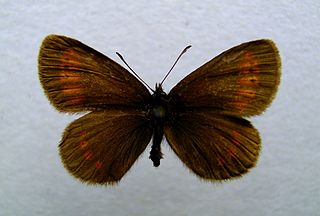| Poa kunthii | |
|---|---|
| Scientific classification | |
| Kingdom: | Plantae |
| Clade: | Tracheophytes |
| Clade: | Angiosperms |
| Clade: | Monocots |
| Clade: | Commelinids |
| Order: | Poales |
| Family: | Poaceae |
| Subfamily: | Pooideae |
| Genus: | Poa |
| Species: | P. kunthii |
| Binomial name | |
| Poa kunthii | |
| Poa kunthii | |
|---|---|
| Scientific classification | |
| Kingdom: | Plantae |
| Clade: | Tracheophytes |
| Clade: | Angiosperms |
| Clade: | Monocots |
| Clade: | Commelinids |
| Order: | Poales |
| Family: | Poaceae |
| Subfamily: | Pooideae |
| Genus: | Poa |
| Species: | P. kunthii |
| Binomial name | |
| Poa kunthii | |

Poa pratensis, commonly known as Kentucky bluegrass, smooth meadow-grass, or common meadow-grass, is a perennial species of grass native to practically all of Europe, North Asia and the mountains of Algeria and Morocco. Although the species is spread over all of the cool, humid parts of the United States, it is not native to North America. The Spanish Empire brought the seeds of Kentucky bluegrass to the New World in mixtures with other grasses. Poa pratensis forms a valuable pasture plant, characteristic of well-drained, fertile soil. It is also used for making lawns in parks and gardens and is common in cool moist climates like the Pacific Northwest, and Northeastern United States. When found on native grasslands in Canada, however, it is considered an unwelcome exotic plant, and is indicative of a disturbed and degraded landscape.

Poa is a genus of about 500 species of grasses, native to the temperate regions of both hemispheres. Common names include meadow-grass, bluegrass, tussock, and speargrass. Poa (πόα) is Greek for "fodder". Poa are members of the subfamily Pooideae of the family Poaceae.
In botany, an infraspecific name is the scientific name for any taxon below the rank of species, i.e. an infraspecific taxon. The scientific names of botanical taxa are regulated by the International Code of Nomenclature for algae, fungi, and plants (ICN). This specifies a 'three part name' for infraspecific taxa, plus a 'connecting term' to indicate the rank of the name. An example of such a name is Astrophytum myriostigma subvar. glabrum, the name of a subvariety of the species Astrophytum myriostigma.

Bangs's mountain squirrel is a poorly known species of tree squirrel, that only lives in Costa Rica and Panama. It can be found in mountain rain forests at an altitude between 1,900 and 2,600 metres, and lives mainly in the tree tops, but sometimes on the forest floor as well. One of its habitats is at the summit of the Poás Volcano in Costa Rica, in a Clusia forest that is almost inaccessible to humans.
Stylidium kunthii is a dicotyledonous plant that belongs to the genus Stylidium and is one of the few species in the genus that is not native to Australia. It is an erect annual plant that grows from 8 to 20 cm tall. Obovate, orbicular, or obleanceolate leaves, about 5-15 per plant, form terminal rosettes with some scattered along the stems. The leaves are generally 4–15 mm long and 2–9 mm wide. This species generally has one to five scapes and cymose inflorescences that are 5–14 cm long. Flowers are white or pink. S. kunthii has a wide distribution in Southeast Asia, ranging from eastern India to Myanmar, Bengal, and Vietnam. Its typical habitats include the wet soils of rice fields, natural grasslands, and road cuttings at an altitude of less than 200 metres. It flowers from November to December. S. kunthii is most closely related to S. uliginosum, but differs by the cauline leaves.

Poa trivialis, is a perennial plant regarded in the US as an ornamental plant. It is part of the grass family.
Poa leioclada is a species of grass that is endemic to Ecuador.
Poa paramoensis is a species of grass in the family Poaceae. It is found only in Ecuador.
Craugastor fleischmanni is a species of frog in the family Craugastoridae. It is endemic to Costa Rica where it has been found on the Meseta Central Oriental and Occidental, the Pacific slopes of the Barva and Poás Volcanos, the Atlantic slopes of the Irazú and Turrialba Volcanos, and on the Cordillera de Talamanca. Common name Fleischmann's robber frog has been suggested for this species.

The golden-browed chlorophonia is a species of bird in the family Fringillidae. It is found in Costa Rica and Panama. It is uncommon in subtropical or tropical moist montane forest above 750 m (2,460 ft) elevation.

The gracile naked-tailed shrew is a species of mammal in the family Soricidae. It is found in Burundi, Gabon, Kenya, and Uganda. Its natural habitat is swamps.

The Sudeten ringlet is a species of butterfly in the family Nymphalidae. It is found in Czech republic, Poland, Romania, France, and Switzerland. Its natural habitat is temperate grassland. It is threatened by habitat loss.

Tussock grasses or bunch grasses are a group of grass species in the family Poaceae. They usually grow as singular plants in clumps, tufts, hummocks, or bunches, rather than forming a sod or lawn, in meadows, grasslands, and prairies. As perennial plants, most species live more than one season. Tussock grasses are often found as forage in pastures and ornamental grasses in gardens.

Hipparchia statilinus, the tree grayling, is a butterfly of the family Nymphalidae.

The World's 25 Most Endangered Primates is a list of highly endangered primate species selected and published by the International Union for Conservation of Nature Species Survival Commission Primate Specialist Group, the International Primatological Society (IPS), and Conservation International (CI). The 2012–2014 list added the Bristol Conservation and Science Foundation (BCSF) to the list of publishers. The IUCN/SSC PSG worked with CI to start the list in 2000, but in 2002, during the 19th Congress of the International Primatological Society, primatologists reviewed and debated the list, resulting in the 2002–2004 revision and the endorsement of the IPS. The publication has since been a joint project between the three conservation organizations and has been revised every two years following the biannual Congress of the IPS. Starting with the 2004–2006 report, the title changed to "Primates in Peril: The World's 25 Most Endangered Primates". That same year, the list began to provide information about each species, including their conservation status and the threats they face in the wild. The species text is written in collaboration with experts from the field, with 60 people contributing to the 2006–2008 report and 85 people contributing to the 2008–2010 report. The 2004–2006 and 2006–2008 reports were published in the IUCN/SSC PSG journal Primate Conservation, while the 2008–2010 and 2010-2012 report were published as independent publications by all three contributing organizations.

The Burrinjuck Nature Reserve is a protected nature reserve on the south west slopes of New South Wales, Australia. The 5,250-hectare (13,000-acre) reserve is located adjacent to the Burrinjuck Dam, with 5,118 hectares of the reserve located on the northern side of the reservoir, and the remaining 89 hectares located on the southern side of the reservoir to the northeast of Black Andrew Nature Reserve. It includes land formerly managed as the Burrinjuck State Forest and Burrinjuck State Recreation Area.

Epichloë typhina is a haploid sexual species in the fungal genus Epichloë. It was originally described as a Sphaeria species. Today, however, it is classified in Epichloë.
| This Pooideae article is a stub. You can help Wikipedia by expanding it. |